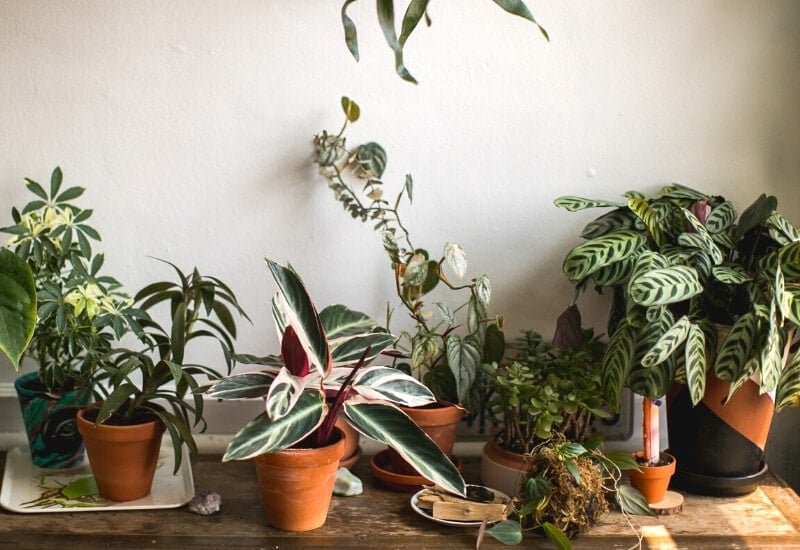
Plants that don’t need much sunlight are rare but very sought after, especially houseplants. They are useful to put in poorly lit rooms or shady places on terraces and gardens that are not full of natural light.
Houseplants that don’t require much sunlight and, like poorly lit conditions, like full shade, often come from the tropical rainforest.
In their native habitats, the canopy above them can get so thick that very direct sunlight reaches them down on the ground. But even in these conditions, these plants are quite showy and very often colorful, like anthurium and moth orchids.
But for the plants to be at their best, you need to mimic these conditions inside your house by supplementing them with artificial light.
While all plants need at least a little sun to grow, but there are plenty of no-light indoor plants that love to thrive in that dark corridor that needs some vitality or in the far-off corner of your office doesn’t get the natural light.
To help figure out the best low-light indoor plants that will grow well in badly lit places, we’ve rounded up the 20 hard-to-kill and easy to care indoor plants and flowers that don’t need sunlight, complete with care tips on how to grow them in your home where you don’t get much sunshine.
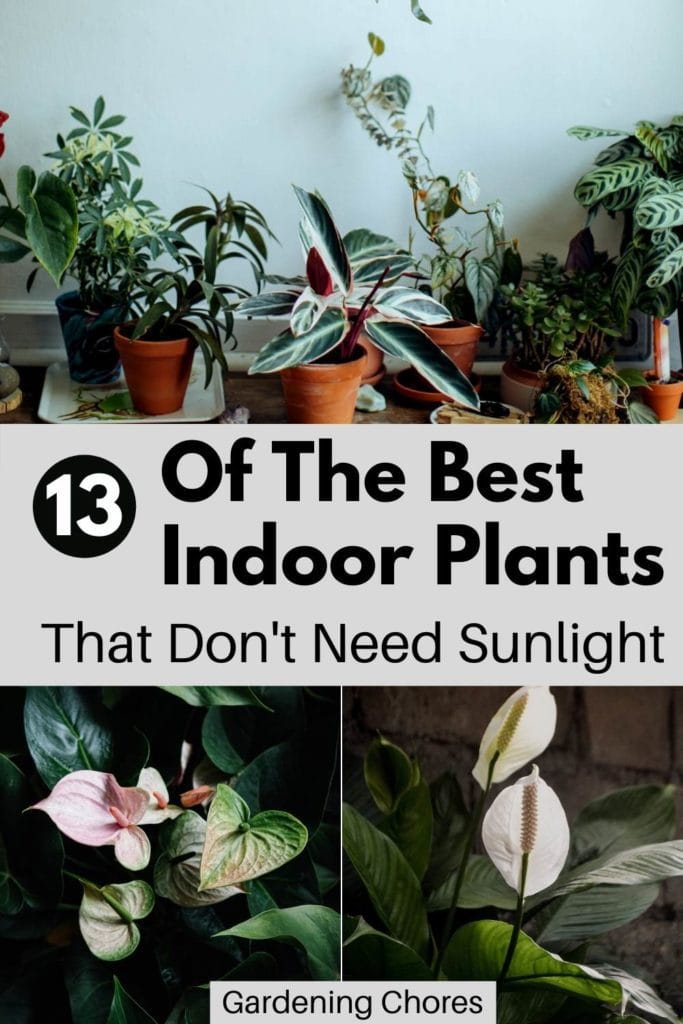
Can Plants Live With No Sunlight At All?
Some plants can actually live without any light! There are a few species, often parasitic, that have no photosynthetic functions, so, they don’t need sunlight to feed themselves.
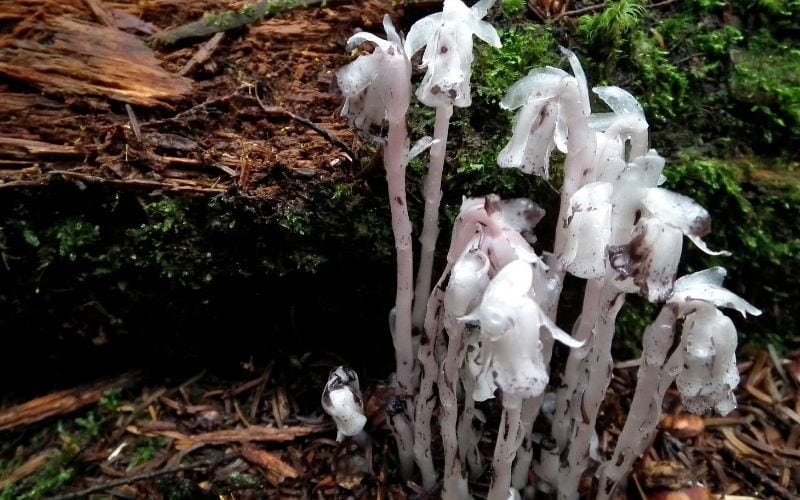
Some famous example is the beautiful and ethereal ghost plant (Monotropa uniflora), which is all translucent white.
But while these plants are interesting to botanists and biologists, they have little use to garners. They are sometimes of no decorative value and often virtually impossible to grow.
Are There Plants that Can Grow in Very Little Light?
Yes, there are quite a few plants that can grow in very little light. And this is what gardeners actually mean by full shade.
Do not be mistaken, “full shade” does not mean “no light”, it means “less than three hours of bright light a day” on average.
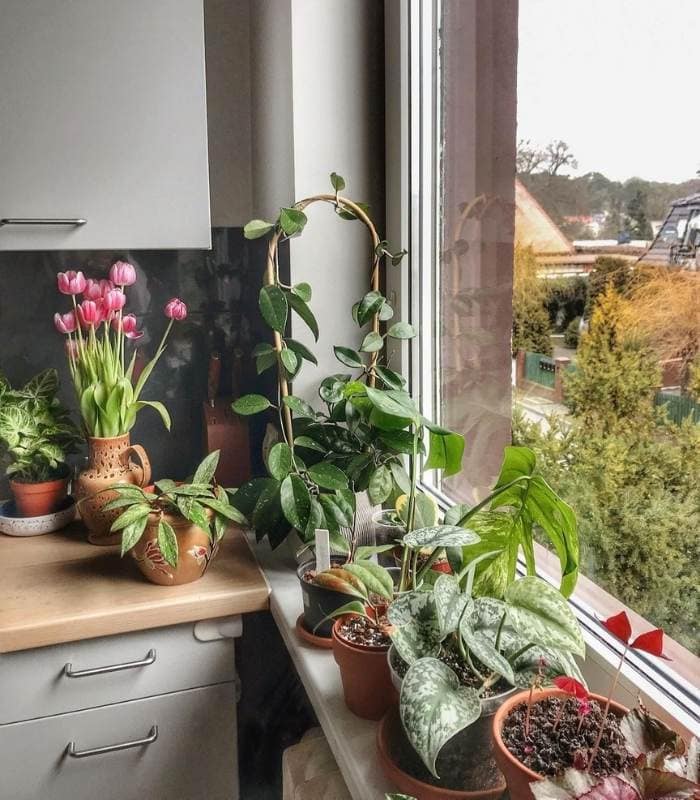
“Bright light”, not just any light… Then, “part shade” means any place where light is strong for less than 6 hours a day.
So, we are not talking about plants you can grow in your kitchen cupboard, but plants you can grow where there is some light, but it is either very weak and / or it lasts less than 6 hours a day.
The examples may flow, like, mosses, for example… Most of them grow well in full shade, but there are also very showy and unexpected plants, like some types of orchids.
As a general tip, direct sunlight usually does more harm than good to houseplants!
And now, let’s see which plants made the shortlist.
13 Best Plants That Don’t Need Sunlight
With beautiful foliage, and often striking colors, here are 13 of the best low-light houseplants to add tons of color and texture to your home and office which receives little or no sunlight.
1. Peace Lily (Spathiphyllum Wallisii)
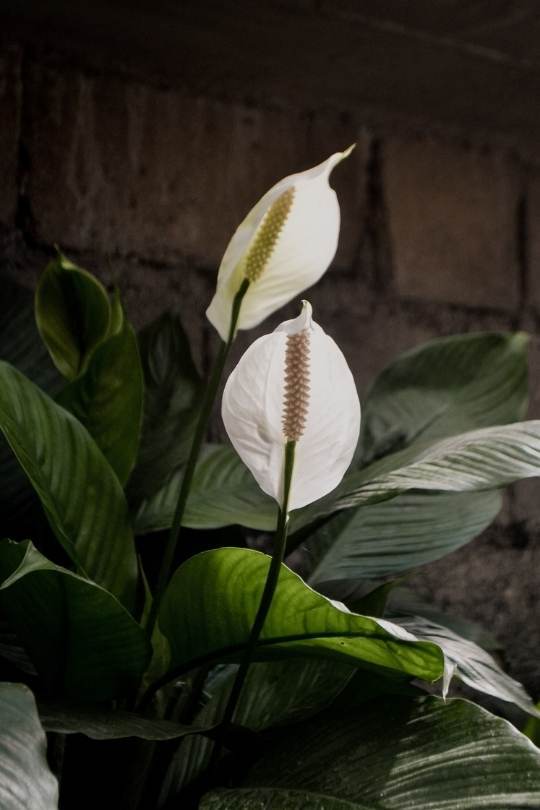
Peace lily is a classic flowering indoor plants which can survive without sunlight. Its beautiful waxy foliage, its elegant upright habit and its white spathes with white spadix that last for weeks have made it popular. It is also a very easy plant to grow. It is low maintenance and undemanding.
These plants are excellent both indoors and outdoors if you live in a mild climate place. They will fill your beds or pots with waxy, dark green leaves for most of the year and then the “white sails” will float on top of them in spring and sometimes into the summer months.
2. Silver Inch Plant (Tradescantia zebrina)
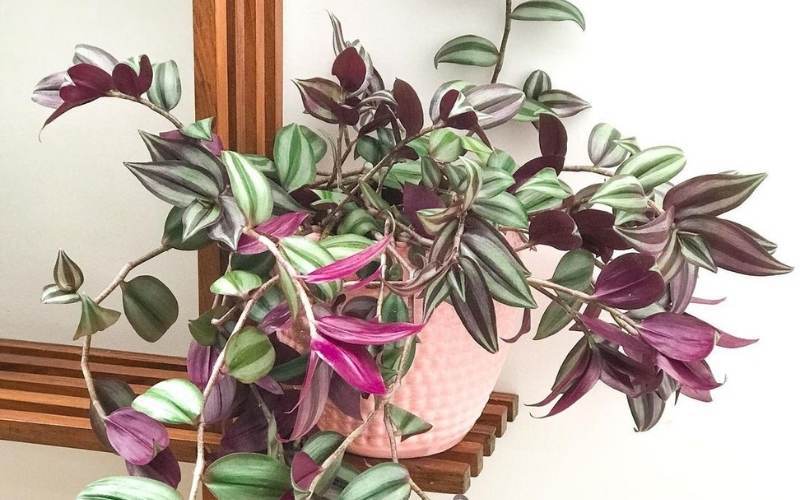
Silver inch plant is a beautiful succulent with variegated leaves which can easily adapts to low-light conditions. They have stripes of green, silver and purple that go from the base to the slightly pointed tips.
They have a trailing habit, so they look great in hanging baskets, but they will also put on a beautiful show in rock gardens, or in raised pots.
Silver inch plant is an unusual succulent because it can live in low light, and it also withstands more watering than most succulents.
This means that you can use silver inch plant (or other Tradescantia species) in compositions with non succulents. One note though, if the shade is excessive, it will lose coloring, especially the purple stripes.
Outdoors in hot places you can use it as groundcover for poorly lit places.
It also has the classical three petaled magenta flowers of Tradescantia.
3. Moth Orchid (Phalaenopis spp.)
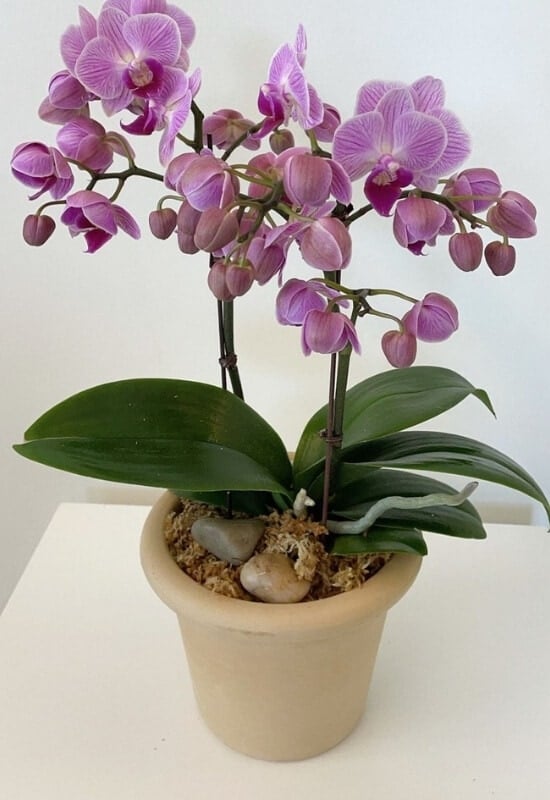
Moth orchids can live in very poor light conditions for years. However, they may not bloom if the lack of light is excessive.
Their favorite situation is with indirect but constant light. In any case, you should absolutely avoid exposing it to direct sunlight for more than 1 or 2 hours a day…
An east facing window would be better for this beautiful and popular orchid (the most popular in the world), and if you notice brown patches on the leaves, it means they are getting too much sunlight.
4. Cast Iron Plant (Aspidistra elatior)

Cast iron plant must is one of the best plants for very dark places where light is really low. In fact, it practically survives in almost total darkness.
It has therefore become a very common houseplant to fill those very difficult spots in dark corridors and rooms.
However, this plant with beautiful waxy and emerald green leaves is also very good as a garden plant in fairly cool regions, where you can grow it in deep shade spots like under trees with thick foliage or in corners where walls block off the light.
5. Swiss Cheese Plant (Monstera adansonii)
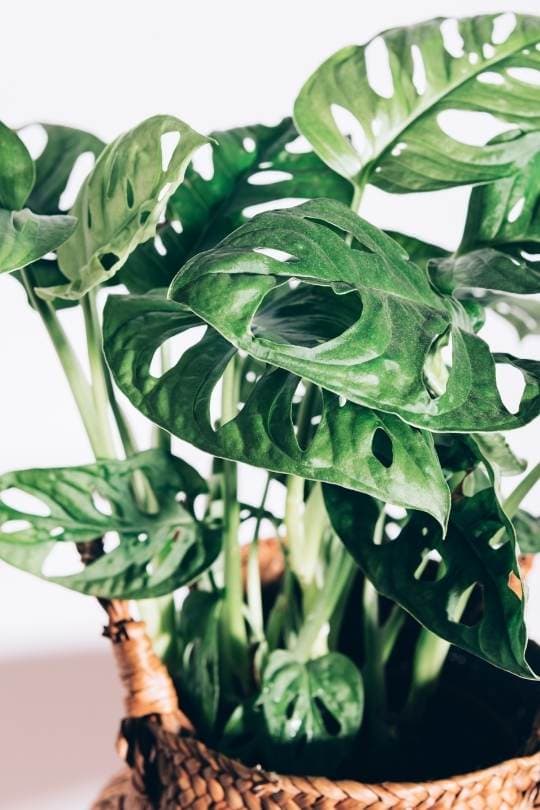
Swiss cheese plant specializes in making the best of little light with its original, perforated, large and waxy rich green leaves. It manages to catch light even with the lowest leaves.
It is a tropical plant, used to growing under tall trees with a very thick canopy, so perfect as a houseplant in little to no light places in your home.
It is a very showy plant. The leaves, especially if kept clean, are a real spectacle… They are very large, and they can reach 3 feet in width (90 cm).
This makes them ideal for fairly large spaces, and despite being in the shade, it will “steal the spotlight” with its strong, quirky and decorative presence.
6. Areca Palm (Dypsis lutescens)
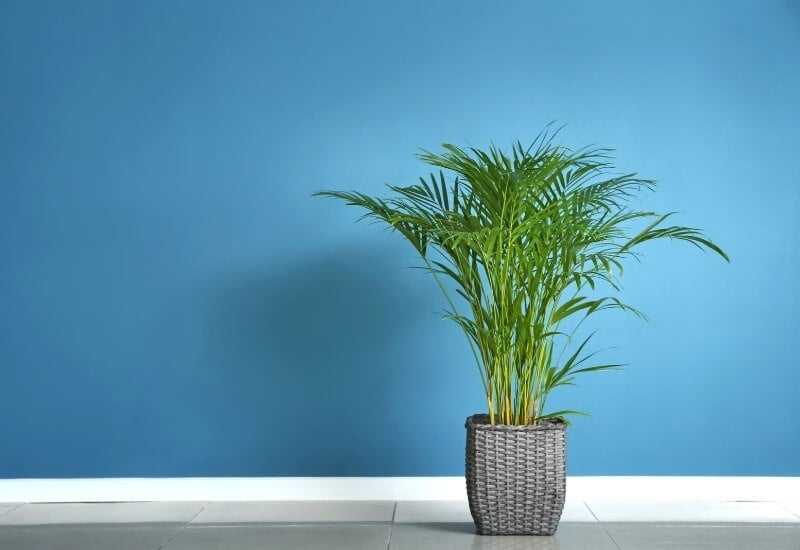
With Areca palm you can turn that shady spot in your living room into a tropical beach. Sort of… It has beautiful green fronds made up of many segments, a bit like ferns, or many tropical palms indeed.
The waxy a d shiny foliage is light emerald green and it comes on smooth and shiny stalks that look a bit like bamboo canes. These have an upright habit at first and then they arch and they come in large tufts.
Original of Madagascar, areca palm can live in bright indirect light, but it will also like partial shade. In any case, avoid direct light or the foliage will turn brown and dry.
It also is a low maintenance plant, very easy to care for, so, it is ideal for those places you often forget. And these happen to be in less lit places most times.
7. Hoya (Hoya spp.)
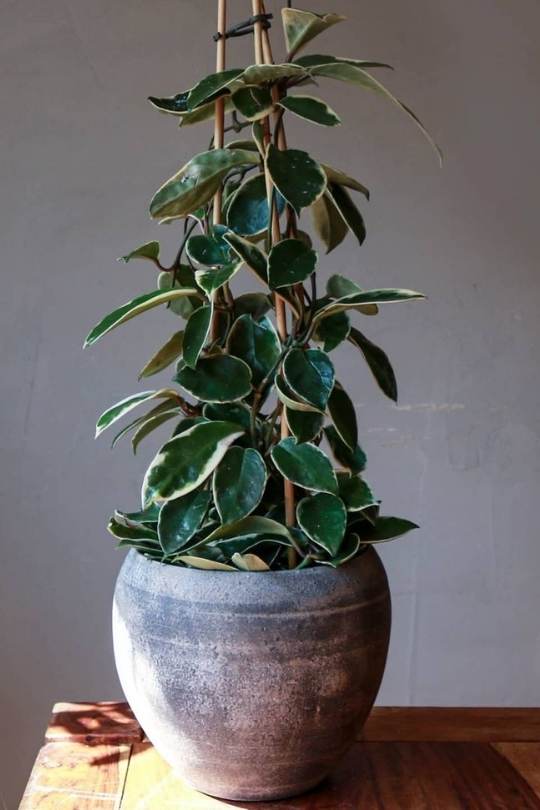
Hoyas are a genus of tropical plants from Asia with about 300 species. They are characterized by beautiful, start shaped flowers that look like made of icing sugar, with an inner floret, usually of a different color.
These come in umbels, each flower being small, but the whole inflorescence has a showy effect. Some species have umbels that reach 11 inches across (27 cm).
They can be vines, some are creepers and some are epiphytes, and they are all evergreen perennials who adapt well in scarcely lit places.
You can grow them indoors but they are mainly outdoor plants to grow in the gentle shade of tall trees, also because they are reasonably cold hardy too.
8. Mother-in-Law’s Tongue (Sansevieria trifasciata)
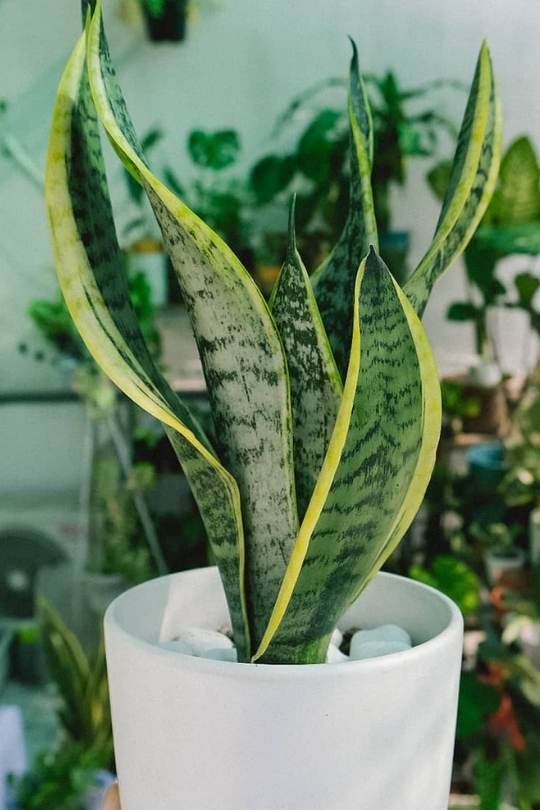
Mother-in-law’s tongue is a beautiful succulent plant that looks great in indoor spaces and is perfect for poorly lit ones. In fact it must be a favorite in hotel corridors and back offices.
It has beautiful, tongue shaped or sword shaped and pointed leaves that grow straight from the ground with an upright habit.
These have a glossy surface and they are very hard but fleshy. They have yellow lateral stripes while the middle part is green with darker horizontal bands.
They are not suitable for outdoors in most temperate regions, but they will enjoy some fresh air in summer.
So, give them a vacation on your terrace or in your garden, but keep them away from strong direct light.
9. Dead Nettle (Lamium maculatum)
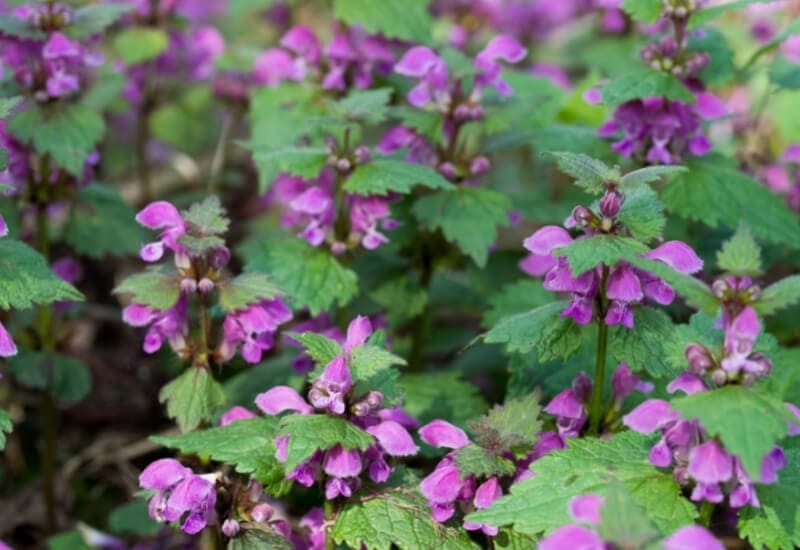
Dead nettle has beautiful foliage and it is perfect for shady places. The leaves are frilled but heart shapes, silver in the middle with bright green edges. Then the blooms come, and they can white, pink, red it purple…
These are short plants that spread horizontally with lots of vitality. This makes them ideal for outdoor spaces where light is at a premium, but also to fill containers on balconies, terraces, window sills etc., but not in full sunlight.
They also propagate very easily, which makes them easy to pass on to friends and neighbors.
10. Prayer Plant (Calatheas spp.)
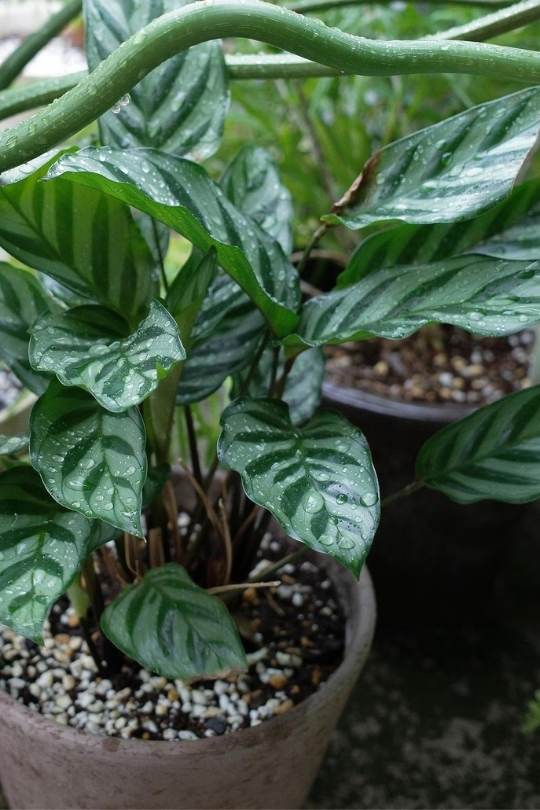
Prayer plant is an exotic looking houseplant original of tropical American regions. Like many plants that grow in thick forests, it manages very well without light.
So, it can go well in that back room with the little window or in your guest room where you always forget to open the blinds.
The leaves are stunning, blade like, loved, oval and wavy, with patches of darker and lighter green along a palette from almost black to light silvery green according to the species.
They are very shiny and glossy and just perfect for offices and living rooms where you’re getting little to no sunlight.
11. Flamingo Flower (Anthurium spp.)
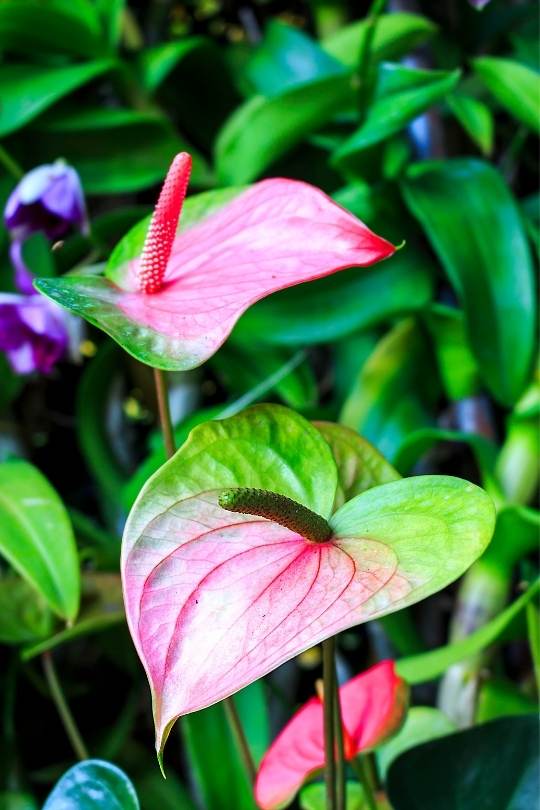
Flamingo flower, laceleaf or just anthurium is an amazing houseplant that grows well even without much light. We all know its glossy colorful spathes that look like waxwork.
The most famous may be round flaming red ones, but there are pink ones, white ones, dark purple ones and even variegated varieties too.
Add the lush heart shaped foliage, with its smooth and shiny texture, and you get a lively but also very sculptural presence.
There must be a reason why this plant from South America has become one of the world’s favorite houseplants…
12. Spider Plant (Chlorophytum comosus)
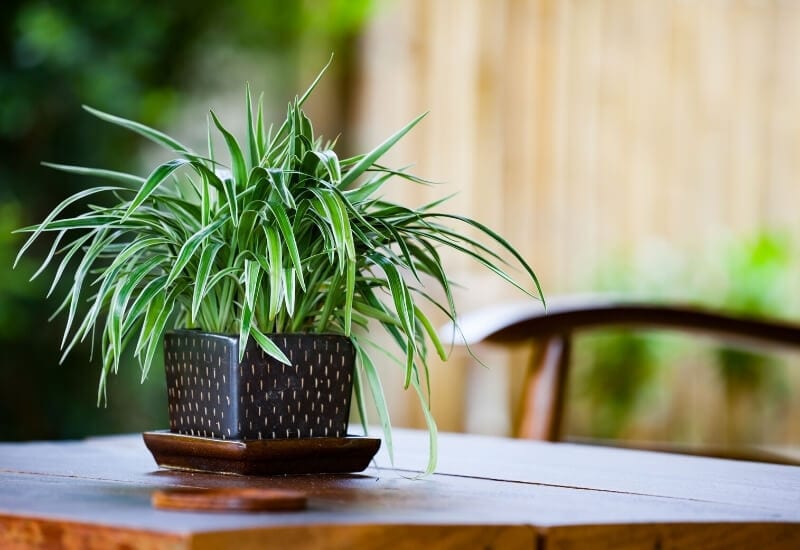
Spider plant looks great both indoors and outdoors in pots and beautiful containers and it will light up even fairly dark places.
It has that beautiful tuft of blade like, hard and fleshy leaves that grow up and then arch – a very elegant habit indeed! The leaves are light green to cream in the middle and they have two dark emerald stripes at the sides.
It produces pups at the end of stolons, which makes it easy to propagate and, if you live in the right region, which makes it ideal for poorly lit rock gardens or slopes. Just plant a few at the top and they will spread down with lots of offsets.
13. Elephant Ear (Caladium spp.)
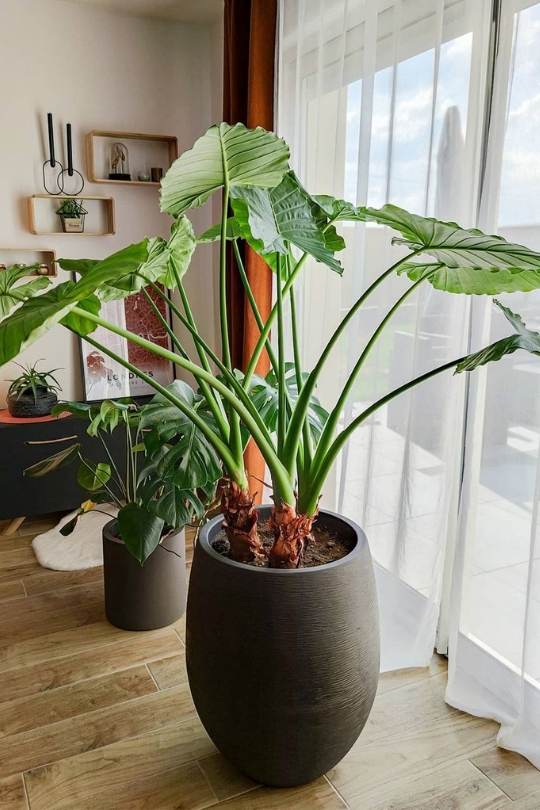
Elephant ear is another exotic plant that likes a bit of shade… It belongs to the Araceae family, which has given us so many houseplants we love for their large, showy and lush foliage.
And elephant ear does not disappoint, with its exotic looking leaves that can reach 1 foot in length (30 cm).
And with a thousand (!!!) cultivars to choose from, you have all the colors of the rainbow to brighten up that shady spot.
The leaves can be in fact from silver blue to dark purple, via pink, many shades if green, magenta, burgundy etc. And most varieties, they are of two colors, one for the veins and edges, and the other for the rest of the leaf.
Dark Spots Maybe – But No Longer Dull
Have you seen how many beautiful plants you can grow even in the absence of abundant light?
From moth orchids to Areca palms, you can liven up that dull place in the shade with amazing flowers, beautiful foliage and elegant plants, and even recreate a corner of a tropical forest in your corridor, office or in that dark spot at the back of your garden.

Written By
Amber Noyes
Amber Noyes was born and raised in a suburban California town, San Mateo. She holds a master’s degree in horticulture from the University of California as well as a BS in Biology from the University of San Francisco. With experience working on an organic farm, water conservation research, farmers’ markets, and plant nursery, she understands what makes plants thrive and how we can better understand the connection between microclimate and plant health. When she’s not on the land, Amber loves informing people of new ideas/things related to gardening, especially organic gardening, houseplants, and growing plants in a small space.

The sun never reaches the positioning of my apt. What to do
Get a smell LED grow light, you can even find small herbs and salads hydroponic stations that come with a light. Just make sure the light spectrum is good enough for plants
From Amazon: Feit Electric A19/GROW/LEDG2/BX Full Spectrum Led 60W Equivalent A19 Non-Dimmable Hydro Grow Light Bulb, Green
I’ve bought it to bring my 40-year-old shamrock plant back to life. Even though it was in a corner with windows on both walls, the sunlight was mostly blocked by trees. The bulb has restored the plant to health and now it’s always blooming.